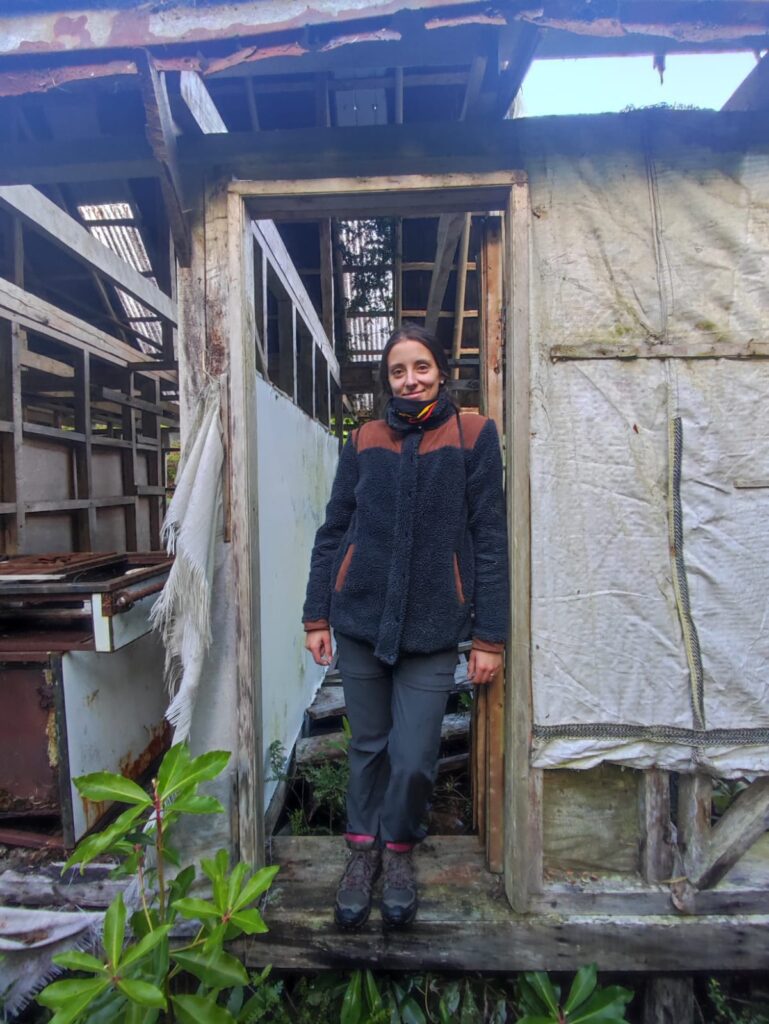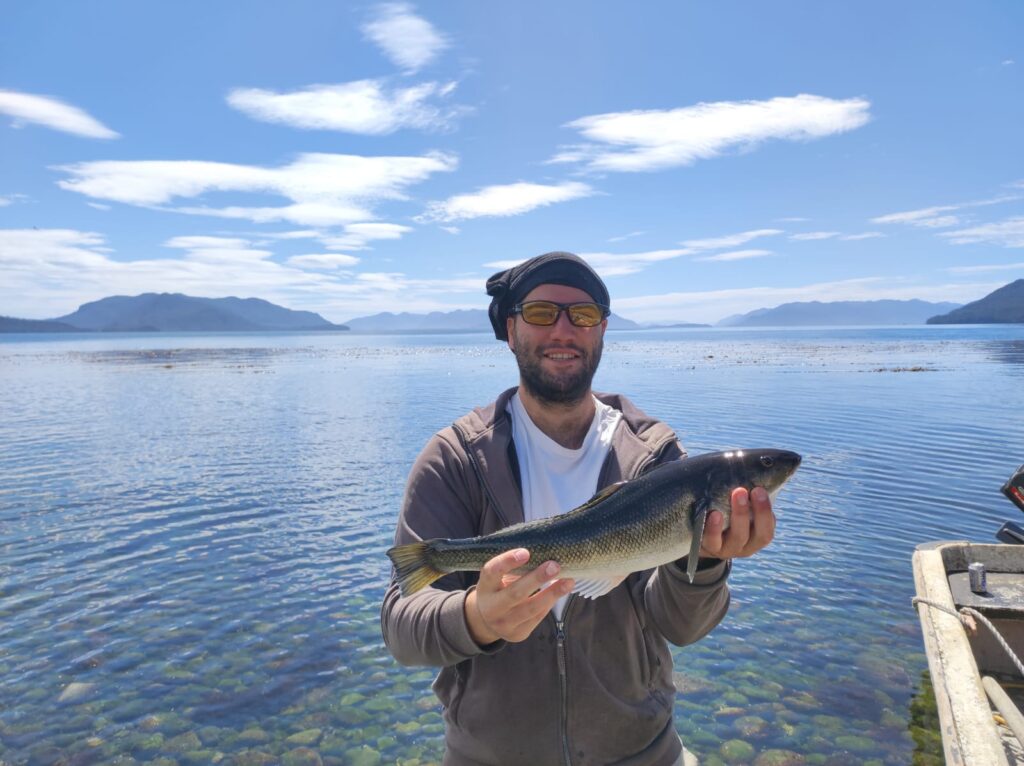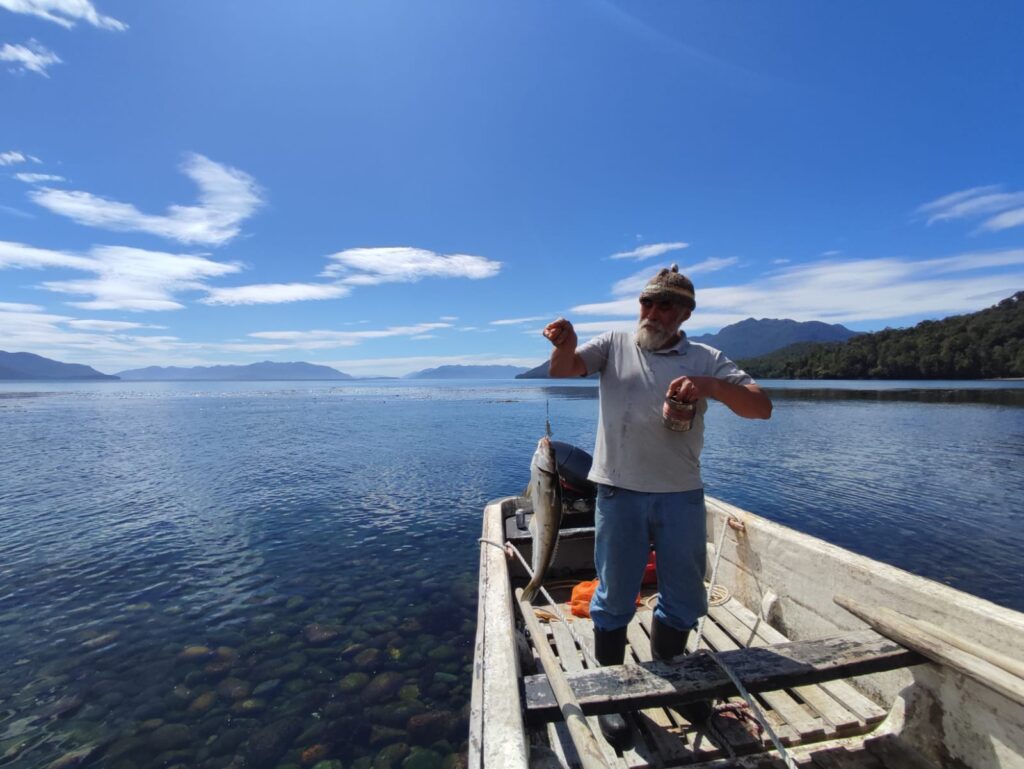By Javier Uribe C.
In the depths of the majestic fjords of the Aysén region, the history of Puerto Bonito is intertwined with the lives and experiences of the brave settlers who made their home in this remote corner of Chilean Patagonia.
The first settler to establish himself in these lands was Teodoro Reyes Godoy, who arrived in Puerto Bonito in the 1960s with the promise of a future full of possibilities. Alongside his wife, Teodoro raised their seven children in this natural paradise, where the connection to the land and the community was essential. The house that Don Teodoro built still stands today, a silent witness to the generations that have passed through its doors..

Although there are only a few settlers left in this part of the fjord, Teodoro’s children continue to visit the place where they spent their childhood, bringing along their own children and grandchildren to share the stories and memories of their roots. Each year, the family gathers in Puerto Bonito for weeks or even months, keeping alive the tradition and connection to the land that saw them grow.
The main activities of Puerto Bonito’s settlers included seaweed harvesting, firewood cutting, and livestock farming, which they traded with their nearest neighbors at a time when communication was limited and boats were simple and rustic, powered by oars and sails.
During a recent excursion to Puerto Bonito, our team had the privilege of immersing ourselves in the rich history and experiences of the settlers who once called this paradise in the fjords of Aysén home. In particular, we had the honor of meeting Don Samuel, the son of Teodoro Reyes Godoy, the first settler of these lands.
Don Samuel shared with us memories of his childhood in Puerto Bonito, including a memorable anecdote that illustrates the challenges faced by the early settlers. “When my parents arrived here, they had no idea how strong the tides were in the fjords,” Don Samuel told us. “They left all our supplies on the beach upon arrival, but the next day, we were shocked to find that everything had been swept away by the tide. Some supplies were lost in the bay, while others were recovered. It was an abrupt welcome that made them realize that settling in this place was not going to be easy.”
The connection to the land and sea was essential to the lives of the settlers of Puerto Bonito. Through fishing and shellfish gathering, they not only met their dietary needs but also strengthened the family and community bonds that united them in this remote place.
Additionally, during our excursion, we had the opportunity to explore the surroundings of Puerto Bonito with Don Samuel as our expert guide. He took us to Punta Pescadores, where we spent a pleasant afternoon fishing and enjoyed a delicious meal in true Patagonian style, featuring freshly fried fish.

We embarked from Puerto Aysén at “Aguas Muertas” to begin our adventure, then joined a municipal boat where we shared stories and experiences with other settlers from the fjords. The journey was calm, with breathtaking landscapes and the comforting aroma of yerba mate. However, the return was a bit more eventful, as we traveled with at least 15 people and around 30 cattle ready to be sold in Coyhaique. Due to weather conditions, we had to anchor overnight in the Quitralco Fjord, but it was well worth it. We were rewarded with a spectacular sunrise that reminded us of the beauty and grandeur of nature.
Our visit to Puerto Bonito was a powerful reminder of the importance of preserving and honoring the history of those who came before us. The legacy of the settlers, their resilience, and their deep love for the land continue to live on in every corner of this place, inspiring future generations to appreciate and protect the natural beauty that surrounds us.


